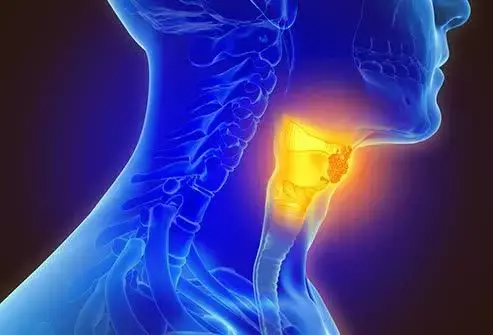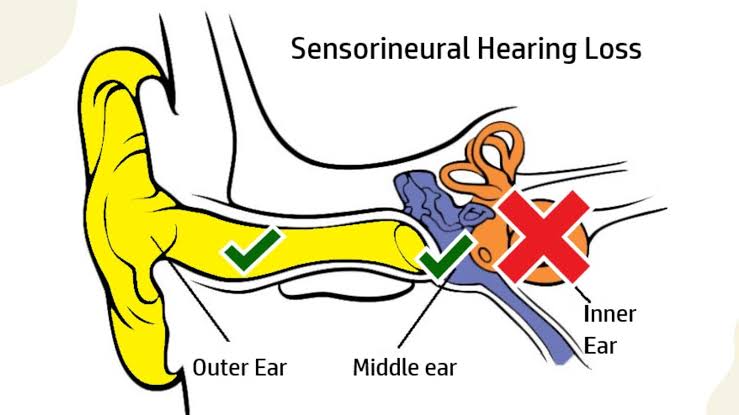
Laryngeal neoplasms represent abnormal growths that occur within the larynx, commonly known as the voice box. This critical anatomical structure, situated at the front of the neck, plays a vital role in breathing, swallowing, and voice production. Neoplasms can be benign (non-cancerous) or malignant (cancerous). While benign lesions are typically localized and do not spread, malignant neoplasms, also known as laryngeal cancer, have the potential to invade surrounding tissues, metastasize to distant parts of the body, and are life-threatening if not treated effectively. Understanding the nature of these growths, their indicators, contributing factors, potential complications, and the importance of community-based education is crucial for effective prevention, early detection, and management.
Definition of Laryngeal Neoplasm
A laryngeal neoplasm refers to any abnormal proliferation of cells forming a mass within the larynx. These can arise from any of the diverse tissues that make up the larynx, including the squamous epithelium lining the vocal folds, the mucous glands, cartilage, or connective tissues.
- Benign Neoplasms: These are non-cancerous growths that do not invade surrounding tissues or metastasize. Common examples include vocal cord polyps, nodules, papillomas (often caused by the Human Papillomavirus – HPV), cysts, and granulomas. While not life-threatening in themselves, benign neoplasms can significantly impact voice quality and may require surgical removal if symptomatic or growing.
- Malignant Neoplasms (Laryngeal Cancer): These are cancerous growths with the capacity for local invasion and distant metastasis. The vast majority (over 95%) of laryngeal cancers are squamous cell carcinomas, originating from the squamous epithelium lining the larynx. Laryngeal cancers are further classified based on their location within the larynx:
- Glottic Cancer: Arising from the vocal folds (glottis). These often present early with voice changes and tend to be detected at earlier, more treatable stages.
- Supraglottic Cancer: Arising from the area above the vocal folds, including the epiglottis, false vocal cords, and arytenoids. These may present later as initial subtle symptoms can be overlooked.
- Subglottic Cancer: Arising from the area below the vocal folds, extending down towards the trachea. These are relatively rare and often present with breathing difficulties at a later stage.
The distinction between benign and malignant neoplasms is critical for diagnosis and dictates the appropriate course of treatment and prognosis.
Clinical Features of Laryngeal Neoplasm
The signs and symptoms of laryngeal neoplasms vary depending on the location, size, and stage of the growth. Early detection is key, and recognizing potential indicators is vital. Common clinical features include:
- Hoarseness or Change in Voice Quality (Dysphonia): This is the most common symptom, especially for neoplasms affecting the vocal folds (glottic tumors). Changes can range from a slight raspiness to a complete loss of voice. Any persistent hoarseness lasting more than 2-3 weeks should be evaluated by a healthcare professional, particularly in individuals with risk factors.
- Persistent Sore Throat: A persistent sore throat that does not resolve with typical treatments could be a sign, though it is less specific than voice changes.
- Difficulty Swallowing (Dysphagia): Pain or difficulty when swallowing food or liquids can occur, particularly with larger tumors or those located in the supraglottic region which is involved in swallowing mechanics.
- Painful Swallowing (Odynophagia): Pain experienced specifically during the act of swallowing.
- Difficulty Breathing (Dyspnea): As a neoplasm grows, it can obstruct the airway, leading to shortness of breath, especially during exertion. In severe cases, it can cause stridor (a high-pitched, noisy breathing sound).
- Persistent Cough: A chronic cough that does not go away may be related to irritation caused by the growth.
- Lump in the Neck: Swelling or a palpable mass in the neck can indicate enlarged lymph nodes due to the spread (metastasis) of laryngeal cancer.
- Pain in the Ear (Referred Otalgia): Pain felt in the ear, often on the same side as the tumor, can occur because nerves supplying the larynx also supply the ear.
- Unexplained Weight Loss: Significant, unintentional weight loss can be a symptom of advanced malignant disease.
- Chronic Bad Breath (Halitosis): Can sometimes be associated with a tumor.
It is important to note that many of these symptoms can also be caused by non-neoplastic conditions like infections, allergies, or benign vocal cord issues. However, the persistence of these symptoms, especially in individuals with risk factors, warrants medical investigation.
Contributing Factors and Risk Factors for Acquiring Laryngeal Neoplasm
Numerous factors can contribute to the development of laryngeal neoplasms, particularly malignant ones. Many are related to lifestyle and environmental exposures. Key contributing and risk factors include:
- Tobacco Use: This is the single most significant risk factor for laryngeal cancer. Smoking cigarettes, cigars, or pipes, as well as using smokeless tobacco, dramatically increases risk. The chemicals in tobacco products damage the cells lining the larynx, leading to genetic mutations that can cause cancer. The risk is proportional to the amount and duration of tobacco use.
- Excessive Alcohol Consumption: Heavy drinking, especially when combined with smoking, significantly elevates the risk of laryngeal cancer. Alcohol is thought to act as a solvent, allowing harmful chemicals from tobacco to penetrate laryngeal tissues more easily, and may also directly irritate the mucosal lining. The combination of smoking and heavy drinking carries a synergistic risk, far greater than the sum of the individual risks.
- Human Papillomavirus (HPV) Infection: Certain types of HPV, particularly HPV-16, are increasingly recognized as a risk factor for laryngeal cancer, especially those occurring in the supraglottis and tonsils (though less common in the larynx itself compared to the oropharynx). While HPV is commonly associated with cervical cancer, it can infect tissues in the head and neck, including the larynx.
- Occupational Exposures: Long-term exposure to certain substances in the workplace can increase risk. These include:
- Asbestos
- Sulfuric acid mist
- Nickel
- Wood dust
- Paint fumes
- Polycyclic aromatic hydrocarbons (found in occupations like coal gasification, printing, and construction)
- Poor ventilation in workplaces with exposure to irritants.
- Gastroesophageal Reflux Disease (GERD) / Laryngopharyngeal Reflux (LPR): Chronic reflux of stomach acid into the esophagus and potentially up into the larynx can cause chronic inflammation and cellular changes, potentially increasing the risk over time. LPR is specifically reflux reaching the larynx.
- Poor Nutrition / Dietary Factors: Diets low in fruits and vegetables and high in processed foods may increase risk. Antioxidants in fruits and vegetables are thought to protect against cellular damage.
- Genetic Predisposition: While most laryngeal cancers are not hereditary, some individuals may have a genetic predisposition that makes them more susceptible to the effects of environmental risk factors like smoking and alcohol.
- Weakened Immune System: Individuals with compromised immune systems (e.g., due to HIV/AIDS or immunosuppressant medications) may have a slightly increased risk.
- Chronic Laryngeal Irritation: While less definitively linked than smoking and alcohol, chronic irritation from factors like chronic inflammation, recurrent infections, or voice overuse (though more associated with benign lesions) has been explored as a potential contributing factor over very long periods.
- Age: The risk of laryngeal cancer increases with age, with most cases occurring in individuals over 55.
- Gender: Men are significantly more likely to develop laryngeal cancer than women, historically linked to higher rates of smoking and heavy drinking among men, although this gap is narrowing.
Understanding these factors is crucial for targeted prevention strategies and identifying individuals who should be vigilant about potential symptoms.
Complications of Laryngeal Neoplasm
Laryngeal neoplasms, particularly malignant ones, can lead to a range of significant and potentially life-altering complications, affecting not only health but also quality of life. These complications can arise from the growth itself, its spread, or the treatments used.
- Airway Obstruction: A growing tumor can physically block the airway, leading to severe difficulty breathing, potentially requiring emergency tracheotomy (surgical creation of an opening in the trachea) to bypass the obstruction.
- Dysphonia / Aphonia (Voice Loss): Damage or removal of the vocal folds due to the neoplasm or its treatment is a very common complication, resulting in hoarseness or complete loss of the ability to speak normally. Rehabilitation and alternative communication methods become necessary.
- Dysphagia (Difficulty Swallowing): Tumors, especially in the supraglottis, or treatment (surgery, radiation), can impair swallowing function. This can lead to malnutrition, weight loss, aspiration (food/liquid entering the airway), and potentially aspiration pneumonia. Some patients may require feeding tubes.
- Pain: The neoplasm itself or its treatment can cause significant pain in the throat, neck, or ear.
- Hemorrhage: Large or ulcerated tumors can bleed.
- Infection: Ulcerated or necrotic tumors can become infected.
- Metastasis: Malignant neoplasms can spread to nearby lymph nodes in the neck or to distant organs such as the lungs, liver, or bone, making the disease much more difficult to treat and significantly worsening the prognosis.
- Treatment-Related Complications:
- Surgery: Can lead to changes in voice, swallowing, breathing (if tracheostomy is permanent), and may involve significant cosmetic changes.
- Radiation Therapy: Can cause acute side effects like sore throat, difficulty swallowing, skin irritation, and long-term effects like dry mouth (xerostomia), lymphedema (swelling), fibrosis (tissue hardening), and potential damage to cartilage or nerves.
- Chemotherapy: Can cause systemic side effects like nausea, vomiting, fatigue, hair loss, weakened immune system, and nerve damage.
- Psychological Impact: Dealing with a diagnosis of laryngeal cancer, its treatment, and potential long-term functional impairments (like voice or swallowing issues) can lead to significant anxiety, depression, and social isolation.
- Recurrence: Even after successful treatment, there is a risk that the neoplasm can return, either in the larynx or elsewhere.
Managing these complications is a crucial part of the overall care plan for individuals with laryngeal neoplasms, often involving multi-disciplinary teams including surgeons, oncologists, radiation therapists, speech-language pathologists, dietitians, and psychologists.
Important Components of Community Education in Prevention of Laryngeal Neoplasm
Community education plays a pivotal role in reducing the incidence and morbidity associated with laryngeal neoplasms, particularly preventable cancers. Educating the public about risk factors and early signs empowers individuals to make healthier choices and seek timely medical attention. Key components of effective community education include:
- Raising Awareness of Risk Factors:
- Highlighting the strong causal link between tobacco use (smoking and smokeless) and laryngeal cancer. Educating on the dangers of secondhand smoke exposure is also important.
- Emphasizing the synergistic risk of combining alcohol and tobacco use.
- Providing information about occupational hazards and the importance of protective measures in relevant industries.
- Increasing awareness of the role of HPV and the potential benefit of HPV vaccination (though primary recommendation in this context is for oropharyngeal cancer prevention, awareness of its role in head and neck cancers broadly is valuable).
- Educating about the potential link between chronic GERD/LPR and cancer risk and the importance of managing these conditions.
- Promoting Tobacco Cessation Programs:
- Providing information about resources available for quitting smoking and other tobacco products (helplines, support groups, nicotine replacement therapy, prescription medications).
- Running public health campaigns highlighting the benefits of quitting at any age.
- Encouraging Responsible Alcohol Consumption:
- Educating the public about recommended limits for alcohol intake and the health risks of exceeding them.
- Educating on Early Signs and Symptoms:
- Specifically focusing on persistent hoarseness (longer than 2-3 weeks) as a critical early warning sign, especially in individuals with risk factors.
- Making the public aware of other potential symptoms like difficulty swallowing, breathing, persistent sore throat, or neck lumps.
- Emphasizing that these symptoms are often due to less serious conditions, but persistent ones require prompt medical evaluation.
- Promoting Regular Medical Check-ups and Screenings (where applicable):
- Encouraging individuals, particularly those with significant risk factors, to discuss their risk with their primary care physician.
- While there are no standard population-wide screening programs for laryngeal cancer in asymptomatic individuals, educating those at high risk (heavy smokers/drinkers) about the importance of reporting any persistent symptoms immediately to their doctor is crucial for early detection.
- Highlighting the Importance of a Healthy Diet:
- Promoting the consumption of fruits and vegetables rich in antioxidants as a potentially protective measure.
- Utilizing Diverse Communication Channels:
- Disseminating information through various platforms such as public service announcements, community health centers, schools, workplaces, social media, and partnerships with healthcare providers and community organizations.
- Addressing Misconceptions and Barriers:
- Countering myths about cancer causes or treatments.
- Addressing fears about diagnosis and treatment to encourage help-seeking behavior.
- Ensuring information is accessible and culturally appropriate for diverse populations.
Effective community education programs can empower individuals to reduce their risk factors, recognize potential warning signs early, and seek timely medical intervention, ultimately leading to better outcomes for laryngeal neoplasms. This requires sustained effort and collaboration between public health bodies, healthcare professionals, educators, and community leaders.







